Since 2012, at every Sziget Festival, Hello Wood has built a stage which draws inspiration from ancient amphitheaters: the Colosseum. They do this using an uncommon building material, pallets, that can be reused after the festival. The now-iconic architecture, whose design is both sustainable and goes beyond that of a functional stage, has become more spectacular and grandiose in 2022 than ever before. The 4,400 pallets used for constructing its nine-meter-high pillars allow more than 3,000 people to dance to the music of famous underground electro DJs. We asked Balázs Szelecsényi, the architect in charge of designing the stage, about the Colosseum.
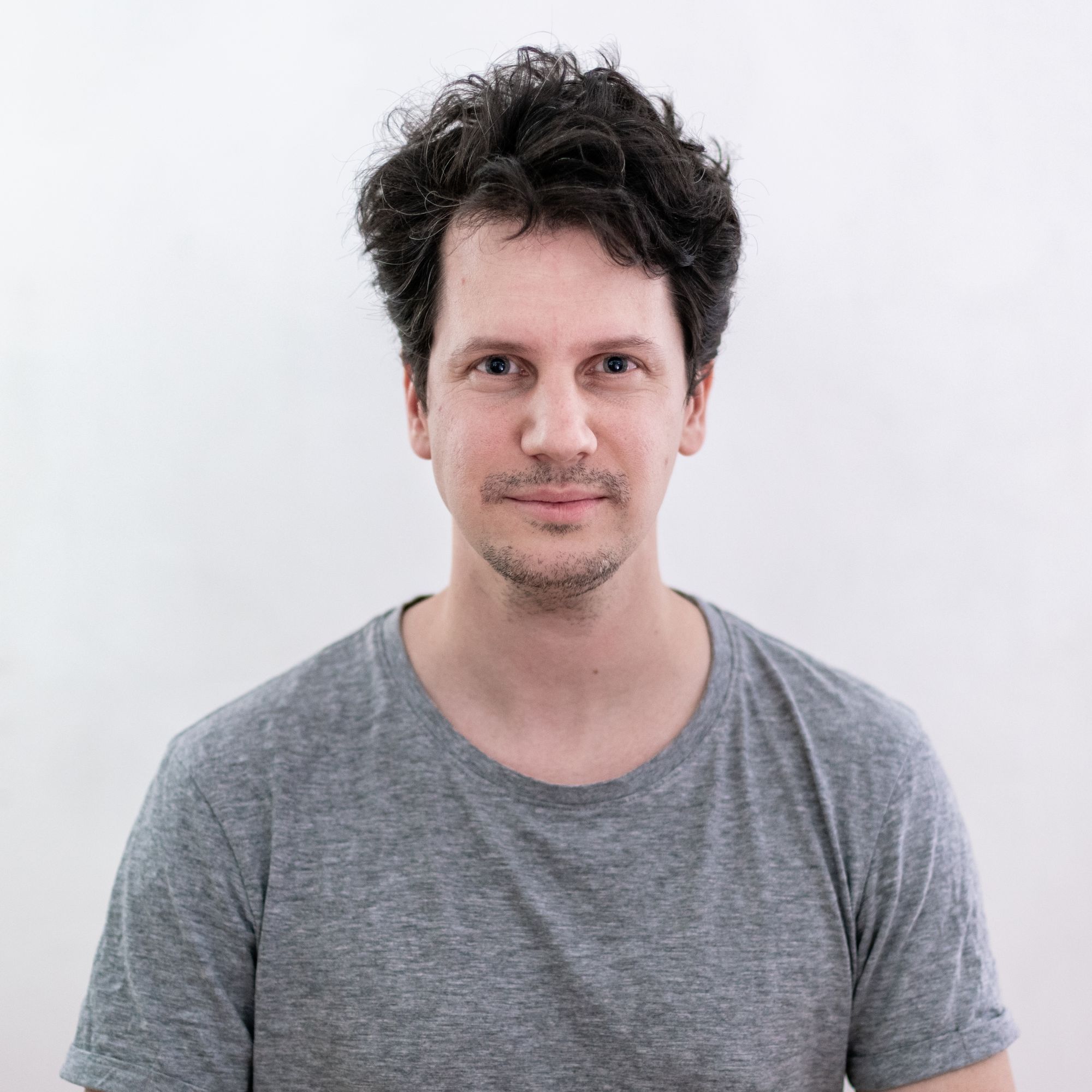
For how long has there been a Colosseum at Sziget, and how was it first conceived? Why did you choose the Colosseum as an architectural form and inspiration, and why pallets as a material?
The Colosseum was born when Sziget wanted an underground electronic music site next to the Party Arena, which is the tent for mainstream electronic music. After the festival, there are always plenty of pallets left lying around, which gave us the idea to use these as the building material. At the same time, we were commissioned to build a grandiose venue, so we needed large dimensions—of course, it was much smaller at the beginning, but then it got gradually bigger every year. The Colosseum of Rome feels grandiose due to its repeating arches, and we wanted to do the same. This year, we were able to create a similar monumental and repetitive architectural structure from the 4,400 pallets, while the columns gave the site a colossal appearance. Of course, this is also a slight nod to the Arena, there is a nice parallel between the two.
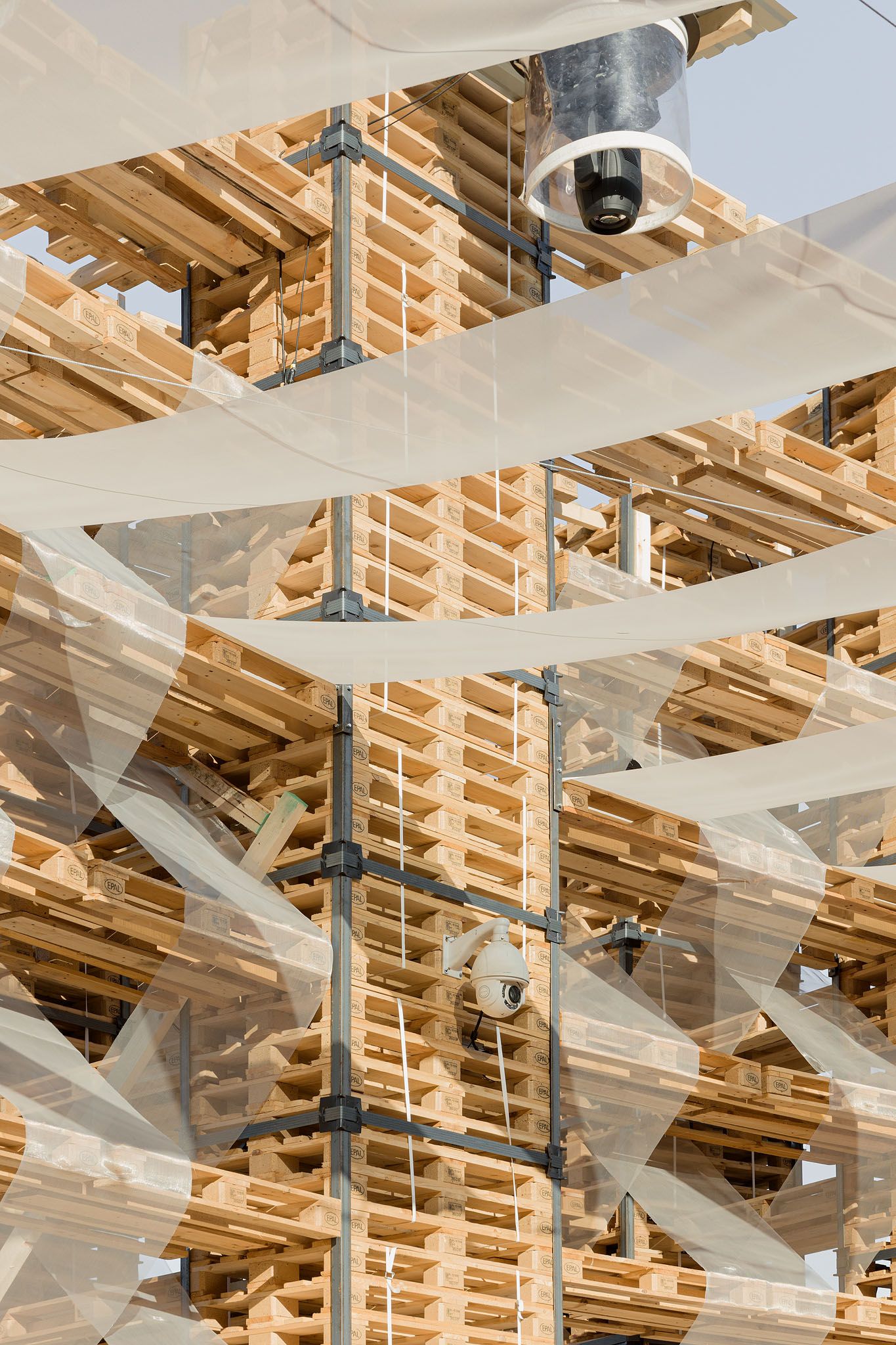
How is the Colosseum different from other venues of Sziget, apart from being made of wood?
What makes the Colosseum special is that it brings architecture into the festival, beyond the world of LED walls and tents; it introduces substance that is interesting in itself. It’s always a challenge as the time frame is always quite short, two and a half to three weeks at most, and it has to be built in that time so that it includes the light and sound engineering, and of course, it also has to be safe. We are basically pushing the limits of this genre.
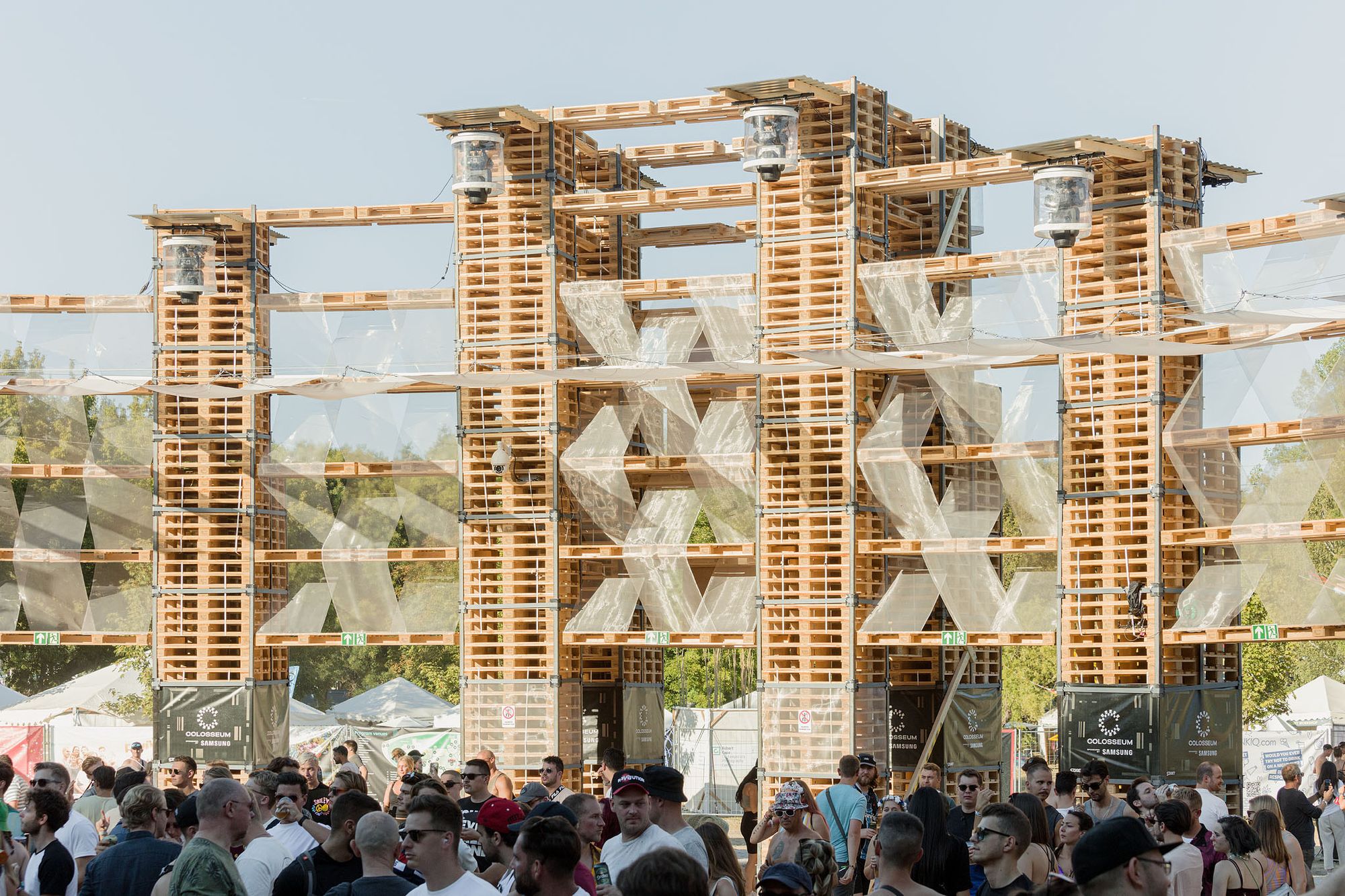
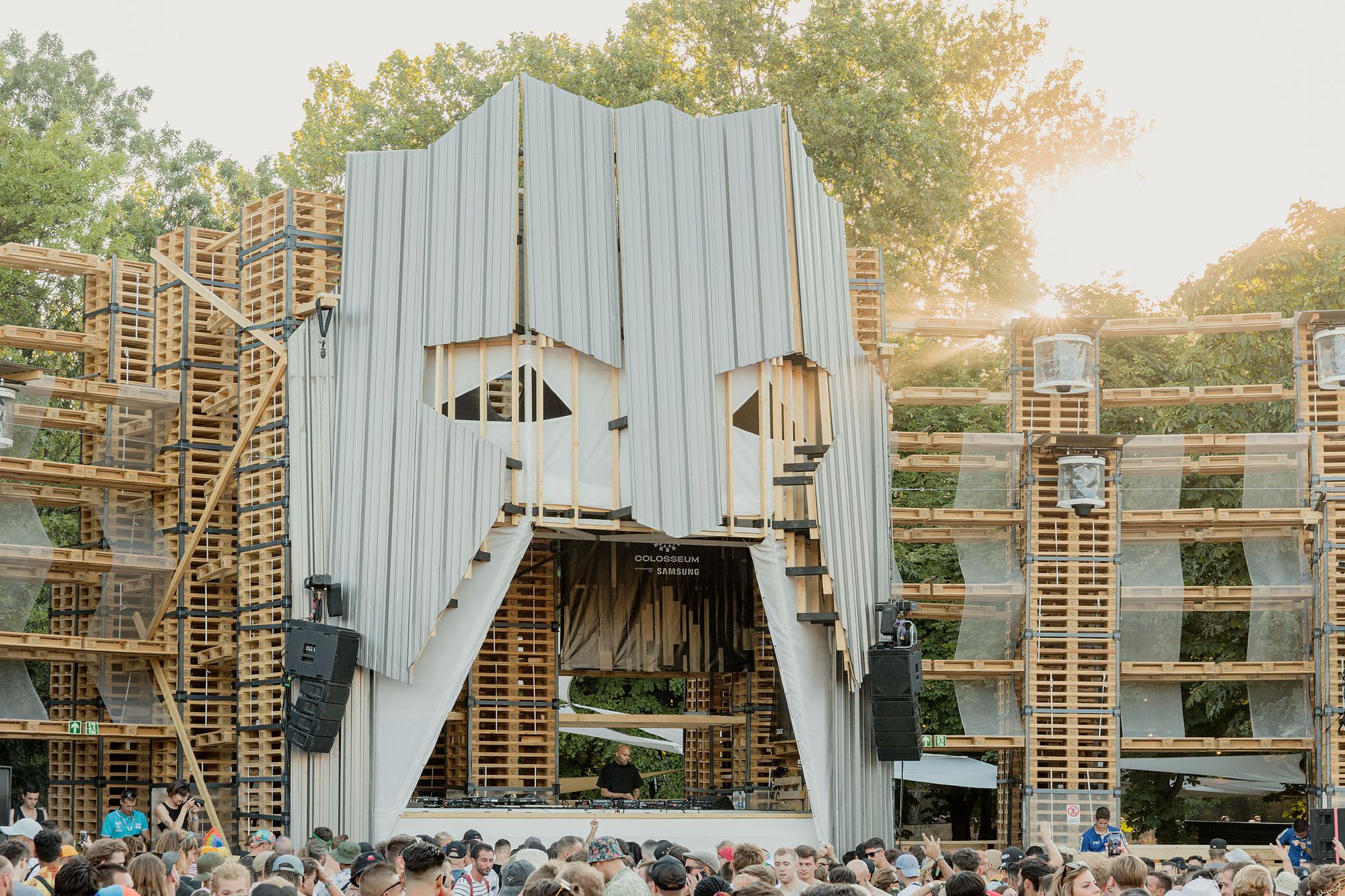
What changed this year compared to previous years?
Festivals—including Sziget—have evolved a lot in the last decade or two, and for larger events, the main venues are expected to be spectacular and photogenic. This year, in the aftermath of the COVID pandemic, Sziget asked us to reimagine somewhat the pre-pandemic building to make it even more grandiose and to give it an icon, which we found in the form of a gladiator’s helmet above the stage. So, apart from upgrading the architectural space itself, we also added a distinctive, photogenic, central figurative element.
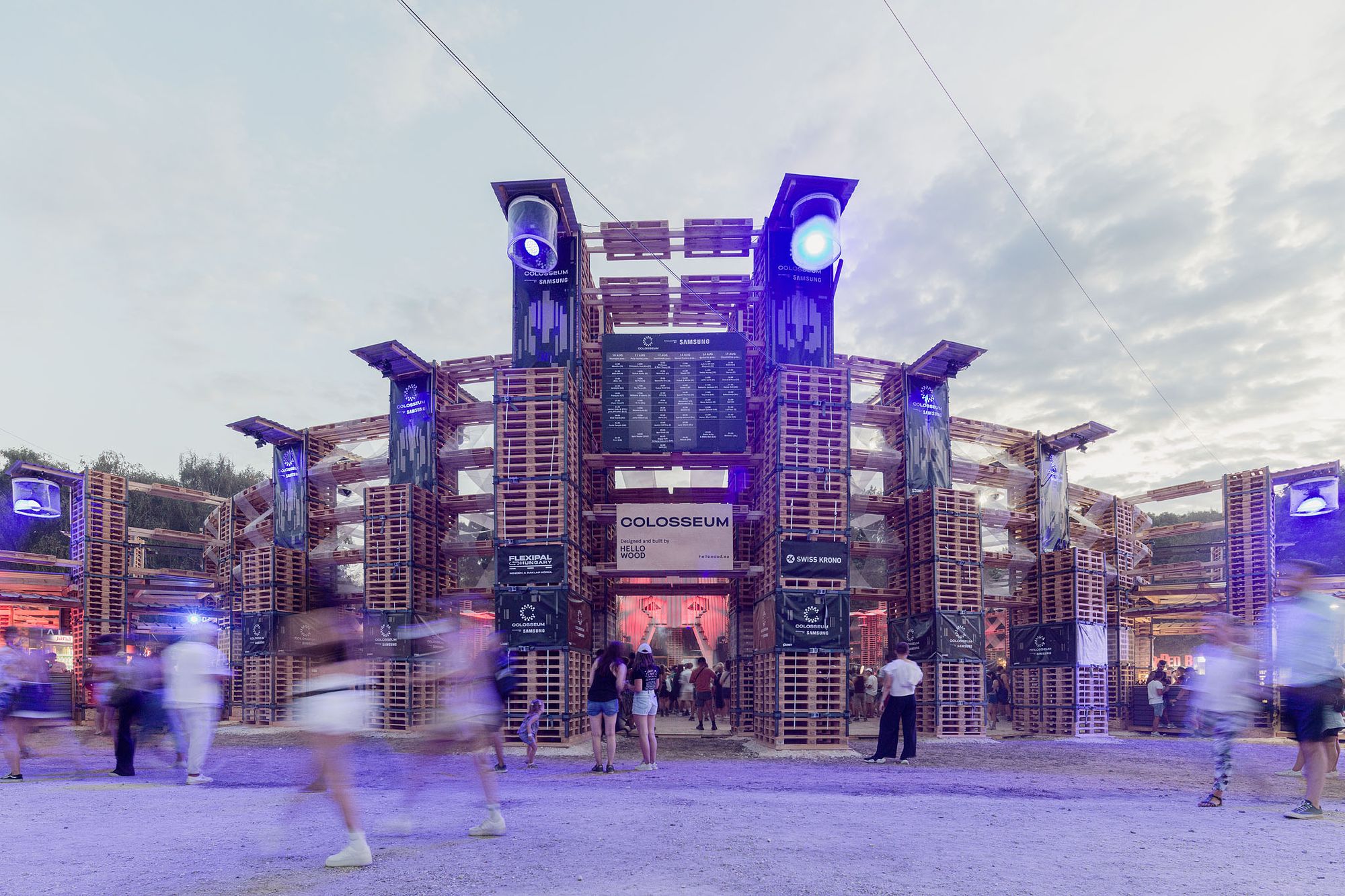
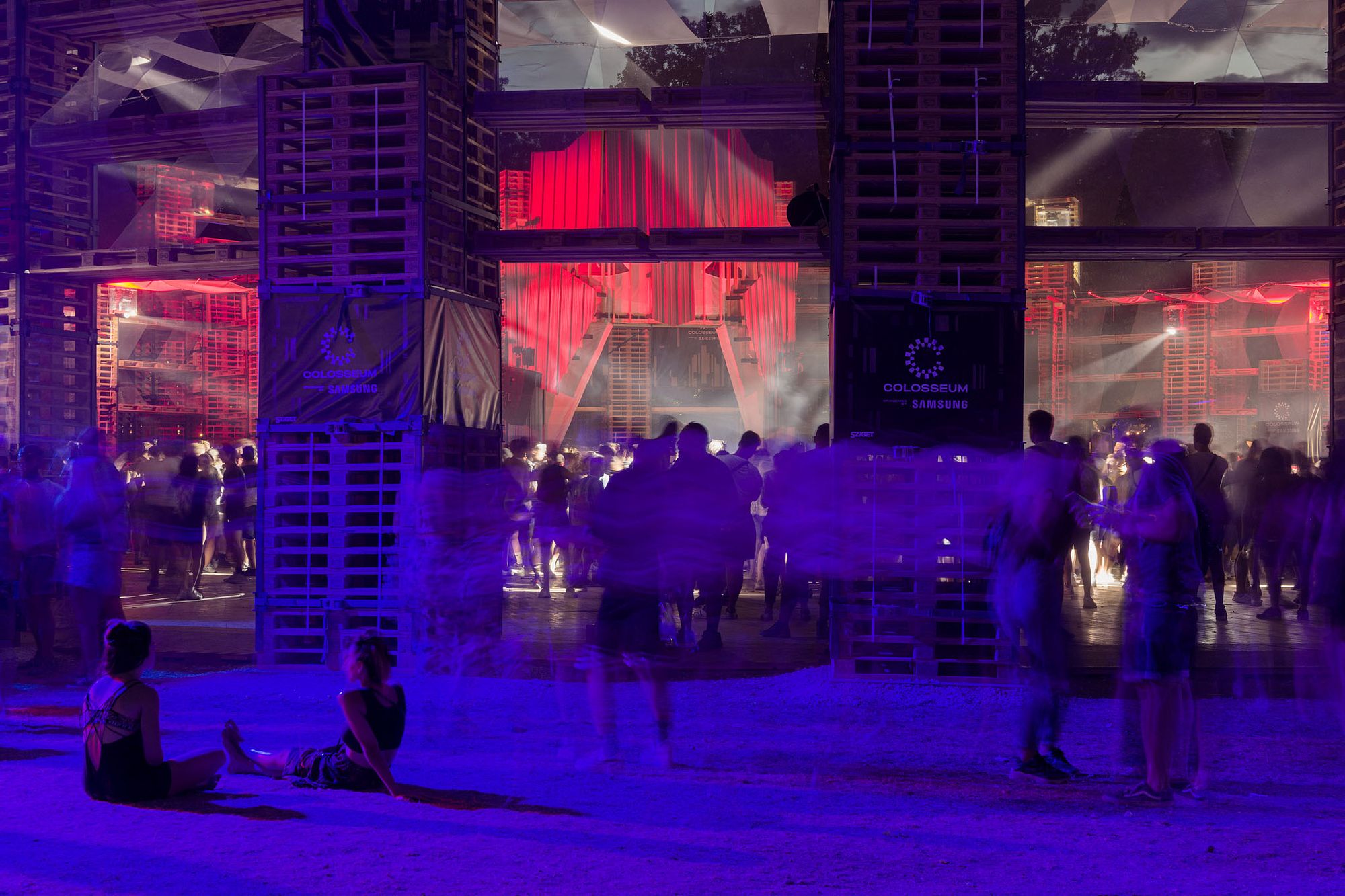
Are you getting feedback from festival-goers?
When people go around Sziget at the start, to see where they will be spending a week, they always make a stop at the Colosseum. We’ve had some pretty good feedback on the gladiator’s head, with festival-goers already taking selfies with it on day zero. The Colosseum is one of the most popular stages of Sziget and we are working to keep it that way and get more and more people to visit.
Sustainability is now a central theme at all the big festivals, this year. Tomorrowland in Belgium, for example, organized a talk with Harari on sustainability, and at Terraforma, in Italy, they built a stage from recycled materials and are very conscious of water consumption. How do you stand on sustainability and will you stick with pallets?
Yes, we will stick with pallets, if only because that’s the trademark of the Colosseum, giving it its character. It’s also an essential part of the project not to produce waste: we rent the pallets which are then (re)used after the festival. In terms of sustainability, we can save a large amount of material by prefabricating—we prefabricate the stage and floor elements and then we store them. As far as the festival is concerned, what I usually see on the Óbuda Island is that nature recovers surprisingly quickly after the Sziget to the state it was in before, and the organizers are also very careful to clean up the traces.

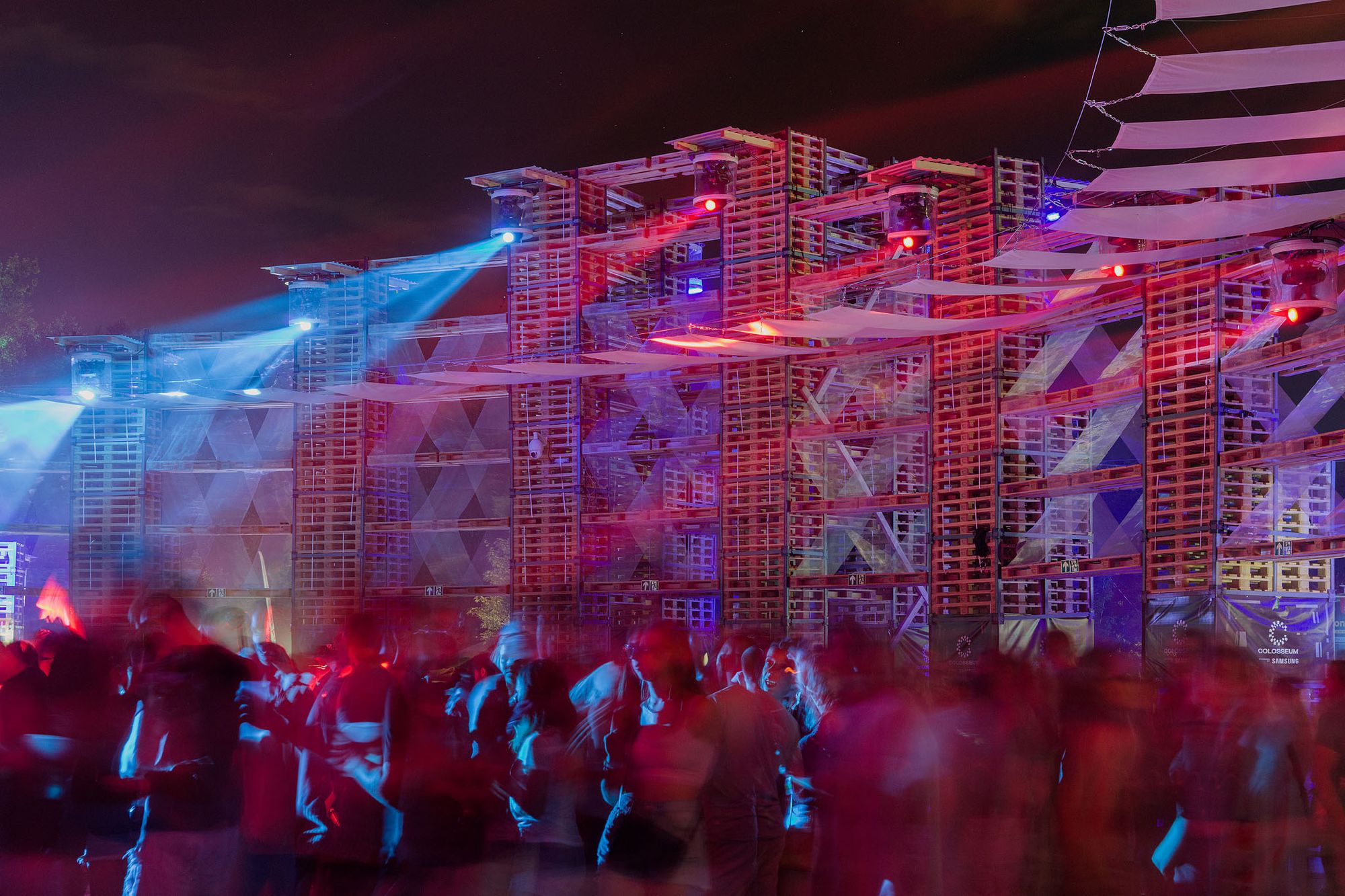
Why is wood as a raw material—which we might think is not so resistant to the elements—and prefabrication important to you?
The Colosseum stage—including construction and dismantling—is there for about a month, so we can only give the wood minimal surface protection for this time. Sure, it’s a bit delicate, but the big advantage is that it’s a natural material and it’s easy to build with. It is now possible to work with wood on a pretty serious scale, with a much smaller ecological footprint than that of concrete, steel, or brick. Wood is a very good material for prefabrication, anything can be built from it, especially with new adhesive technologies which means that large elements do not require large trees to be cut down. Of course, in the decades to come, the climate in which we build it is an important factor—in Hungary, we have to be careful about the increasing UV radiation and to let it dry out after a rain. And prefabrication is a design and construction approach: build with as little on-site work and as little risk as possible. You can work in the shop at any time, which is easier and more convenient; and with wood, you have more control over the quality and time it takes to build something. Also, the most important thing is that we love wood, we love working with it.
Are you already planning next year’s Colosseum?
Year after year Sziget asks us to make it bigger and bigger because it’s getting more popular, there are more and more people, with more and more underground stars arriving, so we have to keep up with the demand. And we try to keep up with it, but it’s always a challenge to create something bigger and more complex in the same amount of time. This year we had a capacity of about four thousand people and next year we’re scaling up to five thousand. There will be a stronger focus on lighting, to make it more in tune with the architecture, so they reinforce each other, and to do this we are tailoring it to the character of the building, which is a major design challenge. The visitor and visual experience are particularly important for an architectural work displayed at a festival like this.
Hello Wood | Web | Facebook | Instagram
Sziget Festival | Web | Facebook | Instagram
Photos of the Colosseum: Balázs Danyi | Portrait: Zsuzsa Darab









